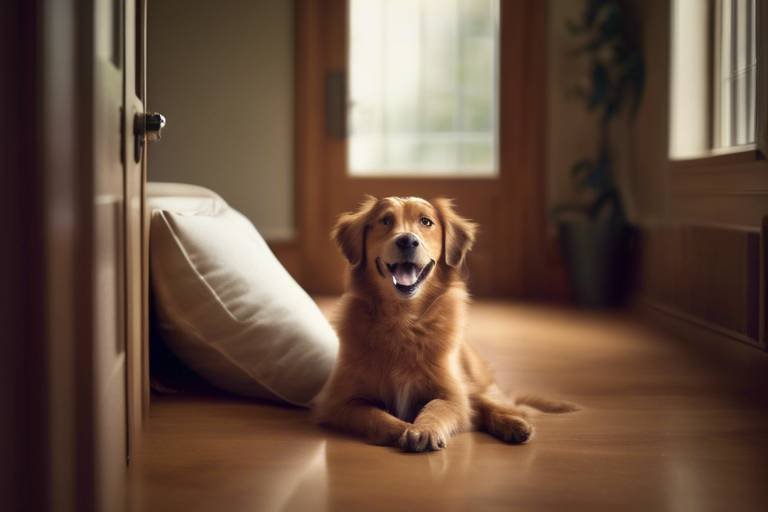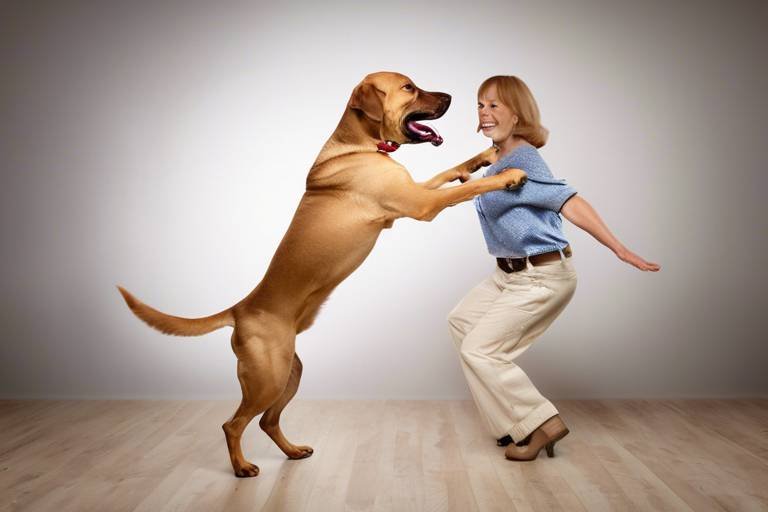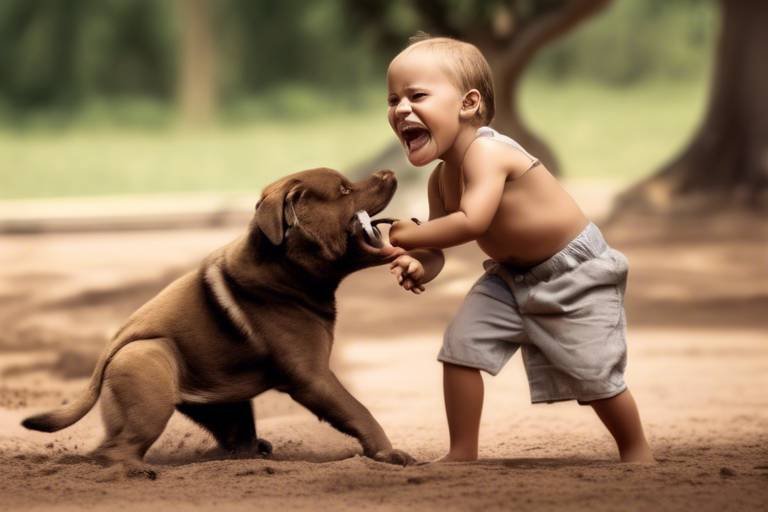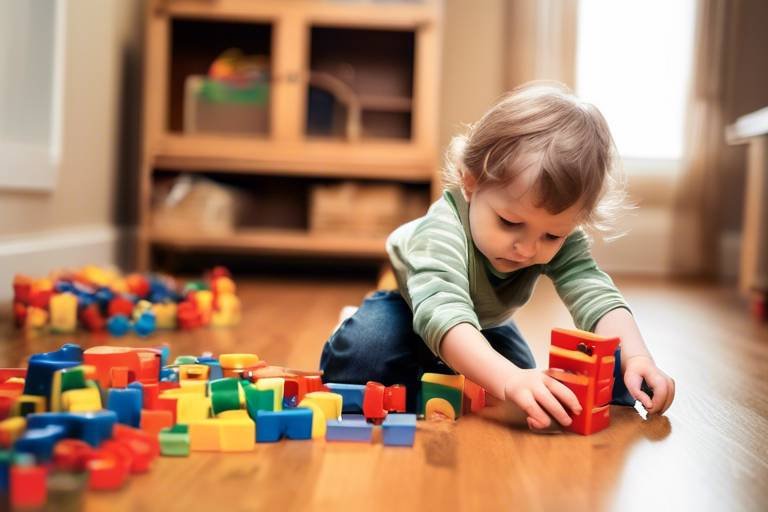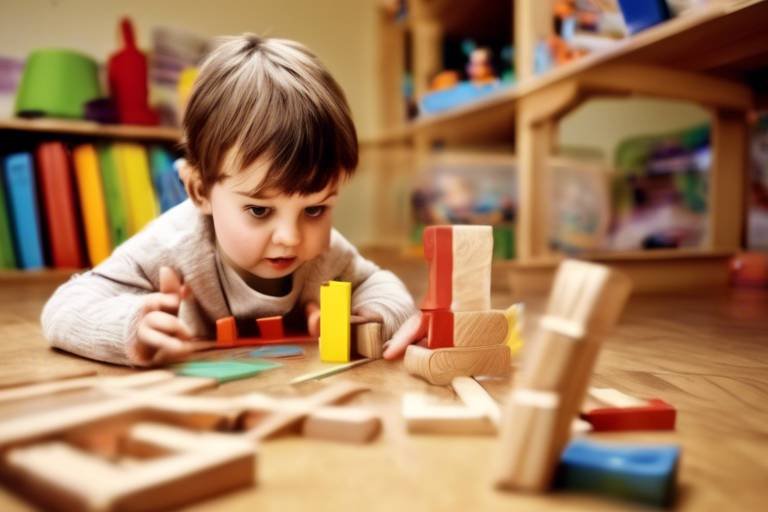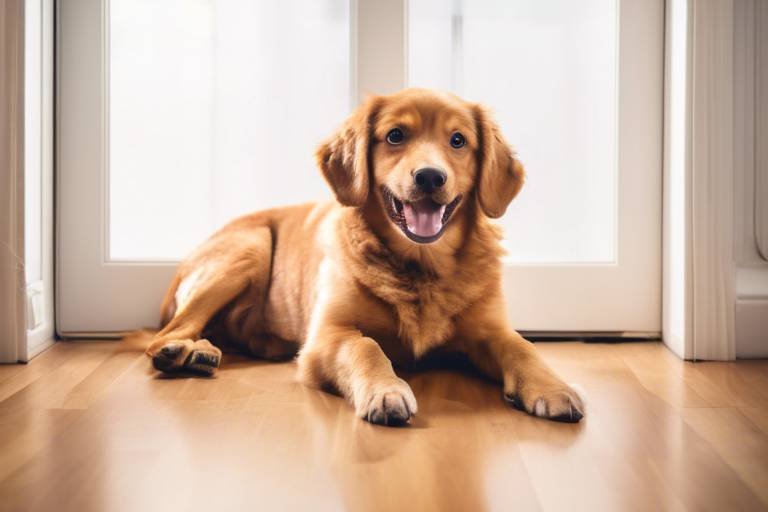How to Train Your Pet to Be Alone
Training your pet to be alone can feel like a daunting task, but it’s absolutely essential for their well-being and your peace of mind. Imagine coming home after a long day at work only to find your furry friend has turned your living room into a war zone. Chewed shoes, scattered cushions, and a guilty look on their face can be a common sight when pets struggle with being alone. But fear not! With the right techniques and a little patience, you can help your pet feel comfortable and secure when left alone.
First things first, let’s talk about separation anxiety. This is a prevalent issue among pets, especially dogs, and understanding it is the first step towards finding a solution. When pets are left alone, they might experience stress that manifests in various ways, such as excessive barking, destructive behavior, or even accidents in the house. Recognizing the signs of separation anxiety early can help you address the issue before it escalates.
Now, let’s dive into creating the perfect environment for your pet. Think of it as setting up a cozy little sanctuary where they can feel safe and relaxed. A well-designed space can significantly reduce anxiety levels and make alone time much more enjoyable. This area should be free of hazards and equipped with everything your pet needs to feel at home.
Separation anxiety occurs when pets become overly attached to their owners, leading to distress when they are left alone. Some common causes include a lack of socialization, trauma from being abandoned, or even changes in their routine. Symptoms to watch for include:
- Excessive barking or howling
- Destructive behavior, such as chewing furniture
- House soiling
- Pacing or restlessness
Being aware of these signs allows you to take proactive measures to help your pet cope with their feelings of anxiety.
Creating a safe and comfortable space for your pet is crucial. This area should be quiet and away from the hustle and bustle of daily life, providing them with a sense of security. Think of it as their personal retreat. You can use a cozy crate or a designated room filled with their favorite items.
Designating a safe space for your pet can help them feel secure. Ideal locations would be places where they can observe the surroundings without feeling overwhelmed. Consider adding:
- A comfortable bed or blanket
- Water and food bowls
- Some toys to keep them occupied
Comfort items like toys and blankets can ease anxiety. For instance, a soft blanket with your scent can provide reassurance. Toys that engage your pet mentally and physically are also great for keeping them occupied. Think of these items as little treasures that remind them of you when you’re not around.
Enrichment activities can keep your pet engaged while alone. Consider interactive toys, puzzle feeders, or even a simple cardboard box filled with crumpled paper. These activities can stimulate your pet’s mind and help reduce boredom. Just like humans, pets need mental challenges to stay happy and healthy!
Gradual desensitization is an effective method for training pets. Start by leaving your pet alone for short periods and gradually increase the time as they become more comfortable. This process can help them associate your departures with positive experiences. Remember, patience is key! Celebrate small victories along the way, and don’t rush the process.
A consistent routine helps pets feel secure and understand what to expect. This routine should include feeding, playtime, and alone time. Think of it as a daily rhythm that sets the pace for your pet’s day. When they know what to expect, they’re less likely to feel anxious.
A well-structured feeding and exercise schedule can improve your pet’s mood. Regular exercise not only helps burn off excess energy but also enhances their overall well-being. Aim for a balanced routine that includes:
- Regular feeding times
- Daily walks or play sessions
- Time for mental stimulation through training or games
Regular playtime strengthens the bond between you and your pet. Incorporating play into your daily routine not only enhances their happiness but also reduces anxiety. Think of it as spending quality time with your best friend – it’s essential for both of you! Try to dedicate at least 20-30 minutes each day for interactive play, whether it’s fetch, tug-of-war, or even teaching new tricks.
Q: How long does it take to train my pet to be alone?
A: The time it takes varies by pet. Some may adjust within a few weeks, while others may need several months. Patience and consistency are crucial.
Q: What should I do if my pet continues to show signs of anxiety?
A: If your pet shows persistent signs of anxiety, consider consulting a veterinarian or a professional trainer for additional strategies.
Q: Can I use calming products to help my pet?
A: Yes! There are various calming products like pheromone diffusers, anxiety wraps, and natural supplements that can help soothe your pet.
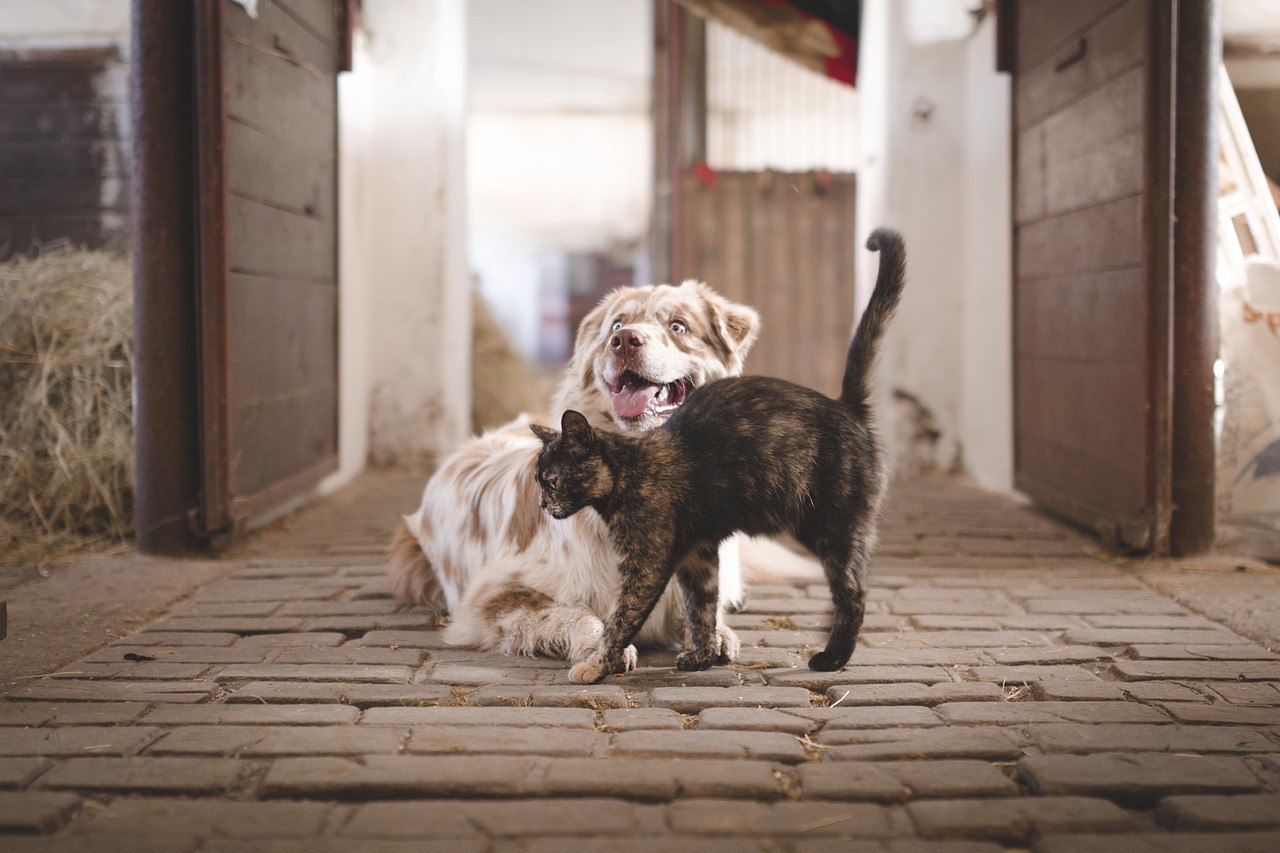
Understanding Separation Anxiety
Separation anxiety is a common issue that many pets face, and it can be just as distressing for pet owners. Imagine leaving your furry friend at home, only to return and find your beloved couch chewed up or your pet anxiously waiting by the door, trembling with fear. That’s the reality for many pet parents dealing with this issue. But what exactly causes this anxiety? It often stems from a lack of socialization, a sudden change in routine, or even traumatic experiences. Pets are creatures of habit, and any disruption can shake their sense of security.
Common symptoms of separation anxiety include excessive barking, destructive behavior, and even accidents in the house. You might notice your pet pacing, drooling, or trying to escape when you prepare to leave. These behaviors are not just annoying; they are signs that your pet is feeling overwhelmed and scared. Understanding these symptoms is crucial for addressing the problem effectively.
When left alone, pets can exhibit a range of behaviors that indicate their distress. For instance, dogs may bark incessantly, while cats might hide or refuse to eat. It's essential to recognize these signs early on, as prolonged anxiety can lead to more severe issues, such as depression or aggression. If you find yourself in this situation, remember that you’re not alone; many pet owners face similar challenges.
To help you better understand separation anxiety, let’s take a look at some of the key factors that contribute to this condition:
| Factor | Description |
|---|---|
| Lack of Socialization | Pets that haven’t been exposed to various environments and situations may struggle more with being alone. |
| Change in Routine | Any sudden changes, such as a new job or moving to a new home, can trigger anxiety. |
| Traumatic Experiences | Pets that have experienced abandonment, abuse, or other traumatic events may be more prone to anxiety. |
By recognizing these factors and understanding the symptoms, you can take proactive steps to help your pet feel more secure when left alone. This journey may require patience and consistency, but with the right approach, you can help your furry friend develop the independence they need while easing their anxiety. Remember, it’s all about creating a safe and comforting environment, so your pet can learn that being alone isn’t something to fear.
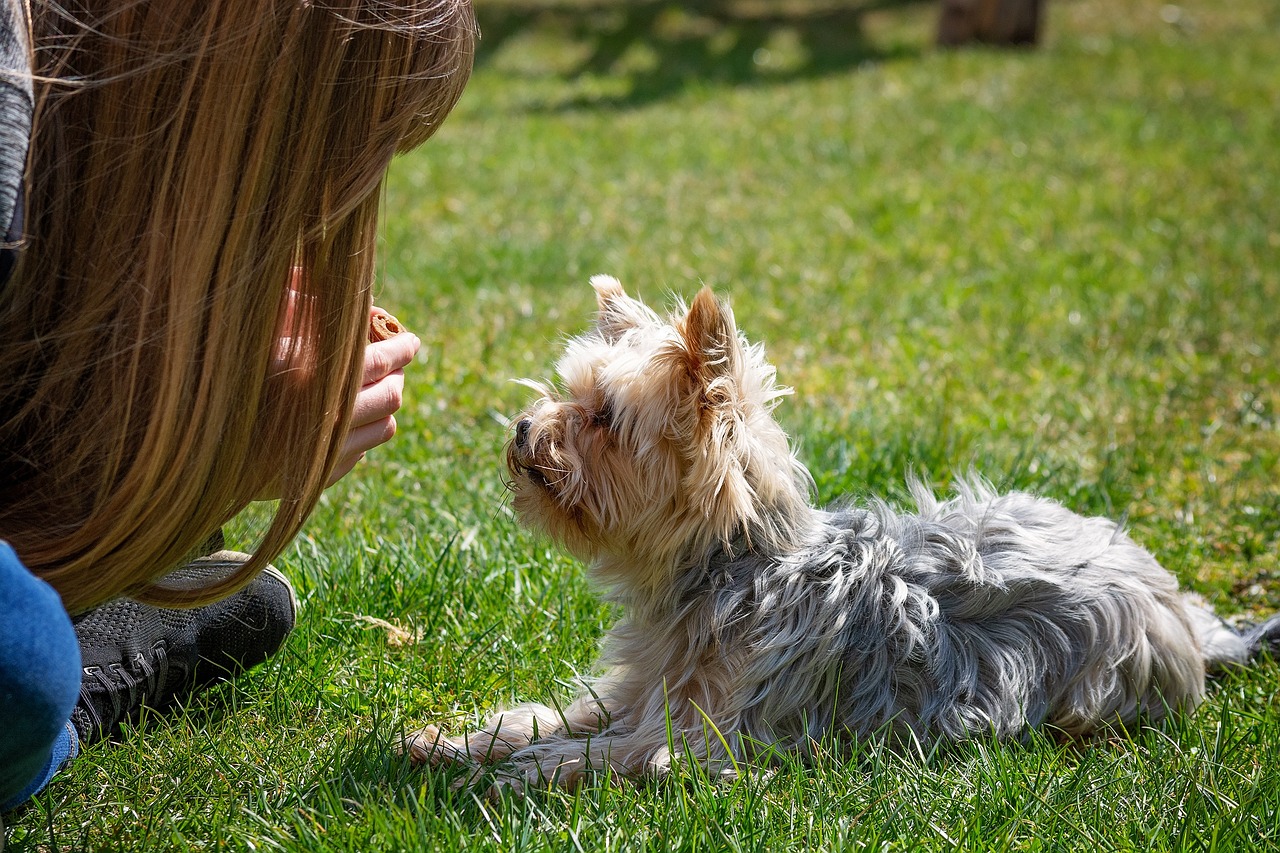
Choosing the Right Environment
Creating the right environment for your pet is not just about aesthetics; it's about fostering a sense of security and comfort. Think of it as crafting a cozy little nook where your furry friend can feel at ease when you’re not around. A well-thought-out space can significantly reduce anxiety and encourage independence. So, how do you go about setting up this ideal environment? Let’s dive into the essentials.
First and foremost, consider the location. The space should be quiet and away from the hustle and bustle of daily life. Pets, like us, need a retreat where they can unwind. A corner of your living room or a cozy spot in a bedroom might work well. Make sure it’s a place where they can see and hear you, but also feel tucked away enough to relax. You want them to feel like they have their own little sanctuary.
Next, think about the layout. A safe space should be free from hazards. Remove any items that could pose a risk, such as small objects they could swallow or cords they might chew on. It’s also a good idea to use baby gates or pet barriers to create a confined area where your pet can feel secure without the chance of wandering into trouble. This setup is especially beneficial for young pets still learning the ropes.
Now that you've chosen a location, let’s talk about what to include in this safe space. The key is to make it inviting and comforting. Here are some ideas to get you started:
- Soft bedding: A plush bed or blanket can provide comfort and warmth.
- Enclosed areas: Consider using a crate or a designated room where your pet can retreat.
- Visibility: Ensure they can see you or the main area of the house, so they don’t feel completely isolated.
Comfort items play a pivotal role in easing your pet’s anxiety. Think of them as little treasures that offer reassurance when you’re not home. Some popular choices include:
- Favorite toys: A beloved stuffed animal or chew toy can provide comfort.
- Blankets: A blanket that smells like you can be incredibly soothing.
- Interactive toys: Toys that dispense treats can keep your pet engaged and distracted.
In addition to comfort items, consider incorporating environmental enrichment into your pet’s space. This is crucial for keeping boredom at bay and stimulating their mind. Here are some ideas:
- Puzzle toys: These can challenge your pet and provide mental stimulation.
- Window perches: If you have a cat, a perch can provide entertainment as they watch the world go by.
- Interactive cameras: Some devices allow you to interact with your pet remotely, which can ease their anxiety.
By thoughtfully designing a safe and enriching environment, you’re not just preparing your pet for your absence; you’re also helping them build confidence. Remember, the goal is to create a space that feels like home, even when you’re not there. With patience and the right setup, your pet will learn to embrace their alone time, giving both of you a sense of peace.
Q: How long should I leave my pet alone when training them?
A: Start with short periods, around 10-15 minutes, and gradually increase the time as they become more comfortable.
Q: What if my pet continues to show signs of anxiety?
A: It may be beneficial to consult with a veterinarian or a professional trainer for personalized strategies.
Q: Can I use calming products to help my pet?
A: Yes, calming collars, sprays, or supplements can assist in reducing anxiety, but it's best to consult a vet first.
Safe Spaces
Creating a safe space for your pet is like building a cozy little fortress where they can retreat and feel secure. This area should be a sanctuary, free from the hustle and bustle of daily life, where your furry friend can relax and unwind. Think of it as their very own hideaway, a place that smells like them and feels familiar. But how do you go about creating this haven? Let’s break it down.
First, choose a location in your home that is quiet and away from the main traffic areas. A corner of the living room, a cozy nook in the bedroom, or even a dedicated room can work wonders. The key is to ensure it’s a spot where your pet won’t be disturbed by loud noises or sudden movements. You want them to feel like they have their own little world where they can chill out without a care in the world.
Next, consider what items to include in this safe space. Here are some essentials that can help create the perfect retreat:
- Comfortable bedding: A soft bed or blanket can provide warmth and a sense of security.
- Toys: Include a few of their favorite toys to keep them entertained and engaged.
- Water and treats: Make sure they have access to fresh water and maybe a few treats to enjoy while they’re relaxing.
Additionally, think about using items that carry your scent, such as an old t-shirt or a blanket you've used. This familiar smell can be incredibly comforting for your pet, helping to ease any anxiety they might feel when left alone.
Another important aspect of creating a safe space is ensuring it’s free from hazards. Check for any items your pet might chew on or get into that could be harmful. You want this area to be as safe as it is cozy. Consider using baby gates if you need to restrict access to certain areas of the house, ensuring they stay in their designated safe space.
Lastly, don’t forget to regularly check in on your pet while they are in their safe space. This not only reassures them but also allows you to gauge how comfortable they are. By observing their behavior, you can make necessary adjustments to their environment, ensuring it remains a peaceful retreat. Just like we all need our personal space sometimes, your pet will appreciate having a place to call their own.
Comfort Items
When it comes to helping your pet feel secure while they're alone, play a pivotal role. Just as a child might clutch a favorite stuffed animal during a thunderstorm, your furry friend can greatly benefit from having certain items that provide a sense of safety and familiarity. These items can transform a potentially stressful situation into a more relaxed experience. But what exactly qualifies as a comfort item? Let's dive into some of the best options available!
First off, blankets are a fantastic choice. A soft, cozy blanket that carries your scent can be incredibly soothing for your pet. It’s like a warm hug that they can snuggle into when they start to feel anxious. You might even consider rotating blankets occasionally to keep things fresh and engaging for your pet. Remember, pets are creatures of habit, and having something they recognize can significantly ease their worries.
Next, let’s talk about toys. Not just any toys, but those that are specifically designed to comfort pets. Think about plush toys or those that can be filled with treats. These can serve dual purposes: they provide entertainment and also a sense of companionship. For example, a toy that squeaks or crinkles can keep your pet engaged, which helps distract them from the fact that they are alone. Moreover, some toys are designed to be soothing, such as those that mimic the heartbeat or warmth of another animal, making them especially comforting.
Another great option is calming sprays or diffusers. These products often contain natural ingredients like lavender or chamomile, which are known for their relaxing properties. Using a calming spray on your pet’s bedding or a diffuser in the room can create a serene atmosphere that promotes relaxation and helps alleviate anxiety. Just like how a soothing aroma can calm our nerves, the same principle applies to our pets!
To sum it up, here are a few essential comfort items to consider for your pet:
- Soft blankets that smell like you
- Plush toys for companionship
- Calming sprays or diffusers with soothing scents
Incorporating these comfort items into your pet’s environment can significantly enhance their ability to cope with being alone. It’s all about creating a safe haven where they can retreat and feel secure. Remember, every pet is unique, so it may take some experimenting to find out what comforts your furry friend the most. Just like us, they have their preferences and quirks!
Q: How do I know if my pet is feeling anxious when left alone?
A: Signs of anxiety can include excessive barking, destructive behavior, or accidents in the house. If your pet seems restless or agitated when you prepare to leave, they might be experiencing anxiety.
Q: Can I use human comfort items for my pet?
A: While some human items can be safe and comforting for pets, always ensure that they are pet-friendly and free of choking hazards. Items like old t-shirts can carry your scent and be soothing, but avoid anything with small parts that could be ingested.
Q: How long does it take for a pet to adjust to being alone?
A: Every pet is different, but with patience and the right techniques, most pets can learn to feel comfortable being alone within a few weeks to a few months.
Environmental Enrichment
When it comes to keeping your pet happy and healthy, plays a pivotal role. Think of it as creating a mini-adventure park right in your home! The goal is to stimulate your pet's mind and body, making their alone time not just bearable, but enjoyable. By incorporating various engaging activities and items into their environment, you can significantly reduce feelings of boredom and anxiety.
Imagine your pet lounging in a cozy corner, surrounded by toys that challenge their intellect and keep them entertained. This is where the magic happens! There are numerous ways to enrich your pet's environment. For instance, consider adding interactive toys that require problem-solving skills. These toys not only keep your pet occupied but also provide a sense of accomplishment once they figure them out. Puzzle feeders are a fantastic option, as they combine mealtime with playtime, encouraging your pet to work for their food.
Another effective method is to rotate your pet's toys regularly. Just like humans, pets can get bored with the same old toys. By introducing new toys or reintroducing old favorites, you keep their interest piqued. Additionally, you can create a scavenger hunt by hiding treats around the house. This not only engages their sense of smell but also encourages them to explore their environment, turning their alone time into an exciting treasure hunt!
Incorporating natural elements into your pet's space can also enhance their environment. For example, cat trees or dog ramps provide physical challenges and opportunities for climbing and exploring. These structures not only offer a place to play but also create vertical space that many pets love. Consider adding a window perch for cats, where they can watch the world go by, or a cozy nook for dogs to curl up in while keeping an eye on their surroundings.
To sum it all up, environmental enrichment is about creating a dynamic and engaging space for your pet. By mixing up their toys, introducing interactive elements, and providing opportunities for exploration, you can help your pet feel more secure and entertained during their alone time. Remember, a happy pet is a well-stimulated pet!
- What are some signs that my pet is bored? Look for behaviors like excessive barking, chewing on furniture, or destructive tendencies. These can indicate that your pet needs more stimulation.
- How often should I rotate my pet's toys? It's generally a good idea to rotate toys every couple of weeks to keep things fresh and exciting for your pet.
- Can environmental enrichment help with separation anxiety? Yes! Engaging your pet's mind and body can help alleviate anxiety by keeping them busy and distracted while you're away.
- What types of interactive toys are best for my pet? Look for toys that challenge your pet's problem-solving skills, such as puzzle feeders, treat-dispensing toys, or toys that require manipulation to release treats.
Gradual Desensitization Techniques
Gradual desensitization is a powerful approach to help your pet become accustomed to being alone without feeling overwhelmed. Think of it as a gentle introduction to independence, much like teaching a child to ride a bike. You wouldn’t just push them off and expect them to pedal away smoothly, right? Instead, you’d start with training wheels and short distances. Similarly, you’ll want to take small, manageable steps with your furry friend.
To begin, start by leaving your pet alone for just a few minutes. This short duration is crucial because it allows them to experience being alone without triggering anxiety. You might consider setting a timer, so you both know when the first session will end. When you return, greet your pet calmly to avoid creating a sense of urgency or excitement that could lead to anxiety in future sessions.
As your pet becomes more comfortable with these short separations, gradually increase the time you spend away. Here’s a simple breakdown of how you might structure this process:
| Week | Time Alone |
|---|---|
| 1 | 5-10 minutes |
| 2 | 15-20 minutes |
| 3 | 30-45 minutes |
| 4 | 1 hour |
This table provides a general guideline, but remember, every pet is unique. Some may adapt quickly, while others might need a little more time. Pay attention to your pet’s behavior during these practice sessions. If they seem anxious, it might be best to slow down and give them more time at each stage before moving on.
Another effective technique is to associate your departures with something positive. For example, give your pet a special treat or a favorite toy just before you leave. This creates a positive association with your absence, transforming what could be a stressful event into a happy one. Over time, your pet will start to look forward to these moments, seeing your departures as opportunities for fun rather than cause for concern.
Lastly, consistency is key. Make sure to practice these techniques regularly, as it will help reinforce your pet’s understanding that being alone is a normal part of their day. Gradual desensitization is not just about the time spent alone; it’s about building trust and confidence in your pet. Just like you wouldn’t want to dive into the deep end of a pool without knowing how to swim, your pet needs to feel secure and supported as they learn to navigate their own space.
- How long will it take for my pet to adjust to being alone? - The adjustment period varies for each pet. Some may take a few weeks, while others may need several months. Patience is essential.
- What should I do if my pet shows signs of extreme anxiety? - If your pet displays severe anxiety, consult with a veterinarian or a pet behaviorist for tailored advice and potential training programs.
- Can I use calming products to help my pet? - Yes, calming sprays, pheromone diffusers, and anxiety wraps can be beneficial. However, they should be used in conjunction with training methods for best results.
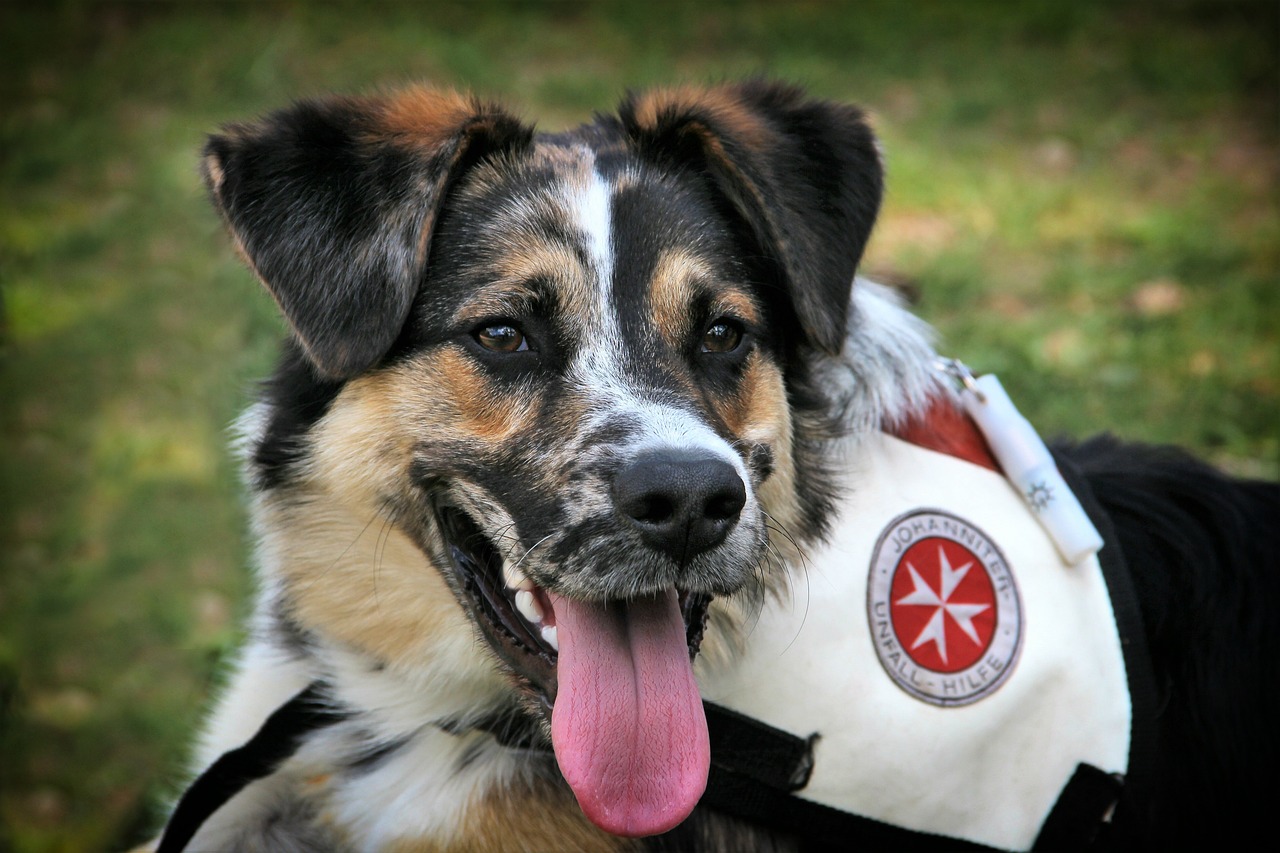
Establishing a Routine
Creating a consistent routine for your pet is not just a good idea; it's essential for their mental well-being and overall happiness. Think of it as a roadmap that guides your pet through their day, helping them understand what to expect. Just like humans thrive on structure, pets do too! When you establish a routine, you provide your furry friend with a sense of security, reducing anxiety and promoting independence. Imagine how comforting it must be for them to know that, after breakfast, it’s playtime, followed by a cozy nap!
To get started, consider dividing your pet's day into key segments: feeding, exercise, playtime, and alone time. This structured approach not only helps your pet feel secure but also allows you to manage your time effectively. For instance, if you feed your pet at the same time every day, they will begin to associate that time with food, making them less anxious when it's time for you to leave. You can visualize this routine as a well-oiled machine, where each part works in harmony to create a balanced day.
Establishing a routine also means being mindful of your pet’s natural rhythms. Dogs, for example, typically have a lot of energy in the morning, while cats might prefer to lounge around. By recognizing these patterns, you can tailor your schedule to fit their needs. Here’s a simple example of how a daily routine might look:
| Time | Activity |
|---|---|
| 7:00 AM | Feeding |
| 7:30 AM | Morning Walk/Playtime |
| 9:00 AM | Alone Time |
| 12:00 PM | Midday Check-In |
| 5:00 PM | Evening Playtime |
| 6:00 PM | Feeding |
| 8:00 PM | Wind Down/Relaxation |
This table illustrates a simple yet effective daily routine that balances feeding, exercise, and alone time. The key is consistency. By following this schedule day in and day out, your pet will begin to feel more secure and less anxious about being alone. They’ll come to expect these activities and will learn to trust that you will return after your time apart.
Moreover, incorporating playtime into your routine not only strengthens your bond but also serves as a great way to expend energy. Just think about how a child feels after a day filled with fun activities—exhausted but happy! The same goes for your pet. Regular interactions during playtime can help alleviate any pent-up energy they may have, making the transition to alone time smoother.
In conclusion, establishing a routine is a powerful tool in helping your pet feel secure and confident when left alone. By providing structure, you not only enhance their quality of life but also foster a deeper connection between the two of you. So, take the time to create a routine that works for both you and your pet, and watch as their anxiety fades away, replaced by a sense of calm and independence.
- How long does it take for a pet to adjust to a new routine? - Every pet is different, but typically it can take a few weeks for them to fully adapt.
- What if my pet shows signs of anxiety despite having a routine? - If anxiety persists, consider consulting a veterinarian or a pet behaviorist for additional strategies.
- Can I change my pet's routine once it's established? - Yes, but make changes gradually to avoid confusion and anxiety.
Feeding and Exercise Schedule
This article provides essential tips and techniques for training pets to feel comfortable being alone, ensuring they develop independence while reducing anxiety for both pets and owners.
Separation anxiety is a common issue in pets. This section explores its causes, symptoms, and how it affects your pet's behavior when left alone.
Creating a safe and comfortable space for your pet is crucial. Learn how to set up an environment that promotes relaxation and reduces stress during alone time.
Designating a safe space for your pet can help them feel secure. This subsection discusses ideal locations and items to include in their safe area.
Comfort items like toys and blankets can ease anxiety. Explore which items work best for different pets and how they can provide reassurance.
Enrichment activities can keep your pet engaged while alone. Discover various toys and activities that stimulate your pet's mind and help reduce boredom.
Gradual desensitization is an effective method for training pets. This section outlines step-by-step techniques to help your pet adjust to being alone without stress.
A consistent routine helps pets feel secure and understand what to expect. This section emphasizes the importance of daily schedules for feeding, playtime, and alone time.
Establishing a well-structured is one of the most effective ways to enhance your pet's mood and overall well-being. Just like us, pets thrive on routine; it gives them a sense of security and predictability. Imagine how chaotic life would feel if you never knew when your next meal or playtime would be!
Start by determining the best feeding times for your pet. For example, if you have a dog, you might choose to feed them twice a day, while cats may prefer smaller, more frequent meals. Here’s a simple table to illustrate a potential schedule:
| Time | Activity |
|---|---|
| 7:00 AM | Breakfast |
| 8:00 AM | Morning Walk/Exercise |
| 12:00 PM | Lunch (if applicable) |
| 5:00 PM | Evening Walk/Playtime |
| 7:00 PM | Dinner |
Incorporating exercise into your pet's daily routine is equally important. Regular physical activity helps burn off excess energy, which can reduce anxiety and destructive behaviors when they are left alone. Depending on your pet's breed and energy level, the exercise duration may vary. For instance, high-energy breeds like Border Collies may require an hour of exercise, while smaller or less active breeds might be satisfied with a 30-minute walk.
Additionally, mental stimulation is just as crucial. Try to mix in fun activities like puzzle toys or training sessions that engage their minds. This not only keeps them entertained but also strengthens your bond. After all, a tired pet is a happy pet!
In conclusion, by establishing a consistent feeding and exercise schedule, you're not only helping your pet feel secure, but you're also setting them up for success when it comes to being alone. This routine will create a sense of stability that can significantly reduce their anxiety levels.
- How long can I leave my pet alone? It depends on the pet's age and temperament. Generally, adult dogs can be left alone for 4-6 hours, while puppies may need more frequent check-ins.
- What should I do if my pet shows signs of anxiety? Gradually desensitize them to being alone, create a safe space, and consider consulting a veterinarian for additional support.
- Are there specific toys that help reduce anxiety? Yes! Look for interactive toys, puzzle feeders, and chew toys that can keep your pet occupied.
Playtime and Bonding
When it comes to our furry friends, playtime is not just a luxury; it's a vital part of their emotional and physical well-being. Engaging in regular play with your pet not only strengthens your bond but also helps to alleviate feelings of anxiety and loneliness they may experience when left alone. Think of playtime as a mini-vacation for your pet—a chance to let loose, have fun, and forget about their worries. So, how can you make the most of your playtime together?
First and foremost, consider your pet's personality and preferences. Some pets thrive on high-energy activities like fetch or tug-of-war, while others may prefer a more relaxed game of hide-and-seek or puzzle toys. It's essential to observe what makes your pet's tail wag or their ears perk up. By tailoring your play sessions to their likes, you ensure that both you and your pet have a blast!
One effective way to incorporate play into your daily routine is to set aside specific times dedicated solely to fun. This could be a quick 10-minute session in the morning before you head out or a longer playtime in the evening when you're both winding down. Consistency is key here; just like we thrive on routine, pets do too. Establishing a predictable playtime helps your pet understand that they can look forward to these moments with you, reducing their anxiety when they are left alone.
Here are some ideas for activities that can enhance your bonding experience:
- Interactive Toys: Toys that require your pet to think and solve problems can be incredibly stimulating. Puzzle feeders, for example, can keep them engaged while providing a rewarding challenge.
- Training Games: Incorporate training into your playtime! Teaching your pet new tricks or practicing commands can be a fun way to bond while also improving their obedience.
- Outdoor Adventures: If you have the space, take your pet outside. A game of fetch in the park or a nature walk can provide both exercise and excitement.
Moreover, don't underestimate the power of snuggle time. Sometimes, simply lying on the couch together, petting your furry friend, or giving them a belly rub can be just as rewarding as an active play session. This form of bonding can help your pet feel loved and secure, which is crucial when they have to face time alone.
Lastly, remember that playtime is not just about physical activity; it’s also about emotional connection. The laughter, joy, and excitement you share during these moments create lasting memories and reinforce your relationship. So, the next time you throw a ball or toss a toy, think of it as building a stronger bond with your pet. After all, a happy pet is a confident pet, and that confidence will shine through even when they are left alone.
Q: How often should I play with my pet?
A: Ideally, you should aim for at least 30 minutes of playtime each day, but this can vary based on your pet's energy levels and needs.
Q: What if my pet doesn't seem interested in play?
A: Some pets may be shy or unsure about play. Try different types of toys or activities to see what piques their interest, and be patient as they learn to engage.
Q: Can I incorporate playtime into training?
A: Absolutely! Using play as a reward during training sessions can make learning fun and reinforce positive behaviors.
Frequently Asked Questions
- What is separation anxiety in pets?
Separation anxiety is a condition where pets experience distress when left alone. This can manifest as excessive barking, destructive behavior, or even attempts to escape. Understanding this issue is crucial for pet owners, as it affects their pet's overall well-being and behavior.
- How can I tell if my pet has separation anxiety?
Look for signs like whining, pacing, or excessive drooling when you prepare to leave. If your pet becomes destructive, or if they refuse to eat or play when alone, these could be indicators of separation anxiety. It's essential to observe their behavior closely to identify these symptoms.
- What are some effective techniques to help my pet feel comfortable being alone?
Gradual desensitization is a great technique! Start by leaving your pet alone for short periods and gradually increase the time. Also, creating a safe space filled with comfort items like toys and blankets can help your pet feel secure while you're away.
- How can I set up a safe space for my pet?
Designate a quiet area free from distractions, where your pet feels comfortable. Include their favorite blanket, toys, and perhaps a piece of your clothing to provide a sense of security. This space should be cozy and familiar to help ease their anxiety.
- What types of comfort items should I provide for my pet?
Comfort items can vary based on your pet's preferences, but generally, soft blankets, chew toys, and interactive toys work well. Some pets may also benefit from stuffed animals or even a ticking clock to mimic the heartbeat, giving them a sense of companionship.
- How can I incorporate environmental enrichment for my pet?
Environmental enrichment can include puzzle toys, treat-dispensing toys, or even safe chew items. These activities keep your pet mentally stimulated and engaged, helping to reduce boredom and anxiety when they're left alone.
- Why is establishing a routine important for my pet?
A consistent routine helps pets feel secure and understand what to expect throughout the day. Regular schedules for feeding, playtime, and alone time can significantly reduce anxiety and improve your pet's mood.
- What should I include in my pet's feeding and exercise schedule?
Ensure your pet has a balanced diet and regular exercise. A structured schedule could involve feeding them at the same time each day, followed by a walk or play session. This routine not only keeps them healthy but also helps them feel more settled.
- How can I make playtime more effective for my pet?
Incorporate interactive games that stimulate your pet both mentally and physically. Activities like fetch, hide-and-seek, or even training sessions can strengthen your bond and provide essential exercise, helping to alleviate their anxiety.

